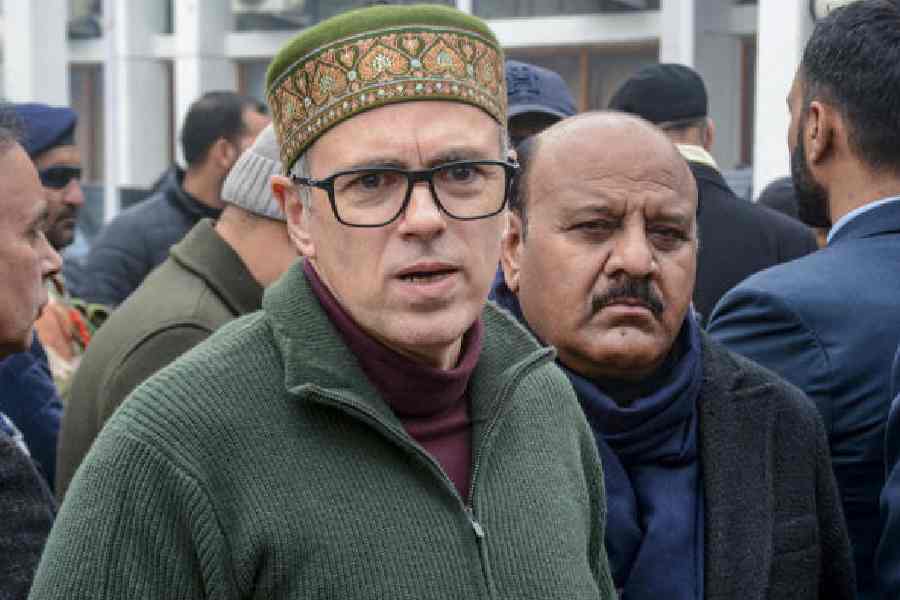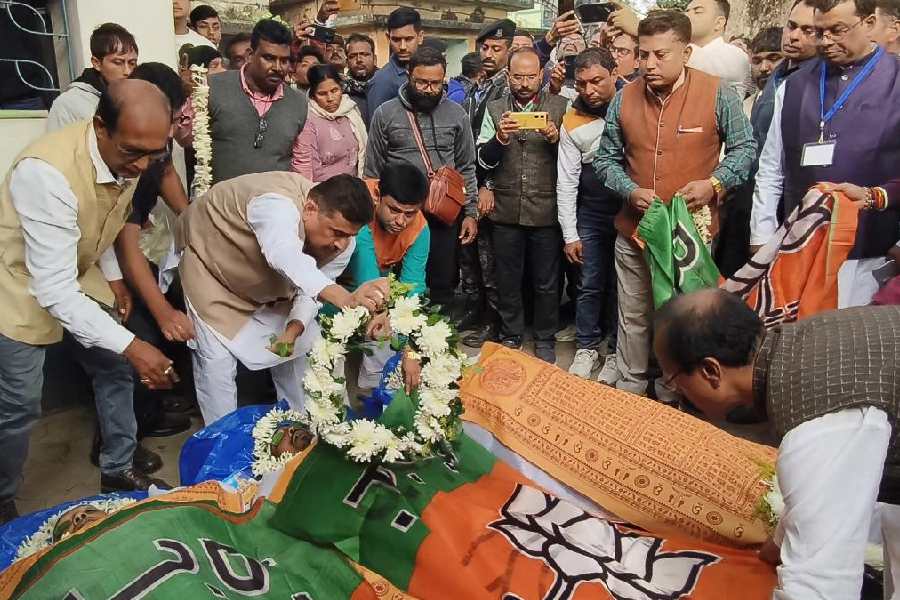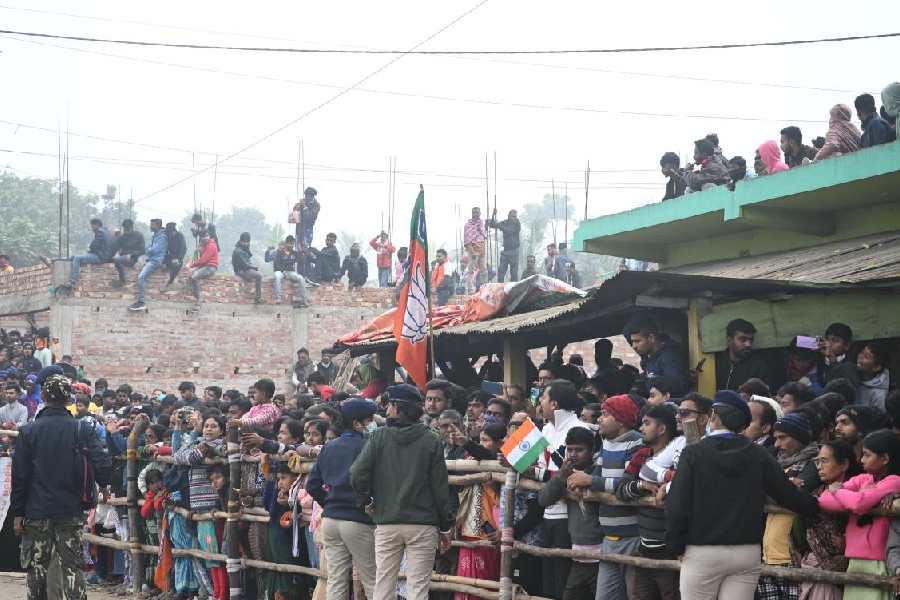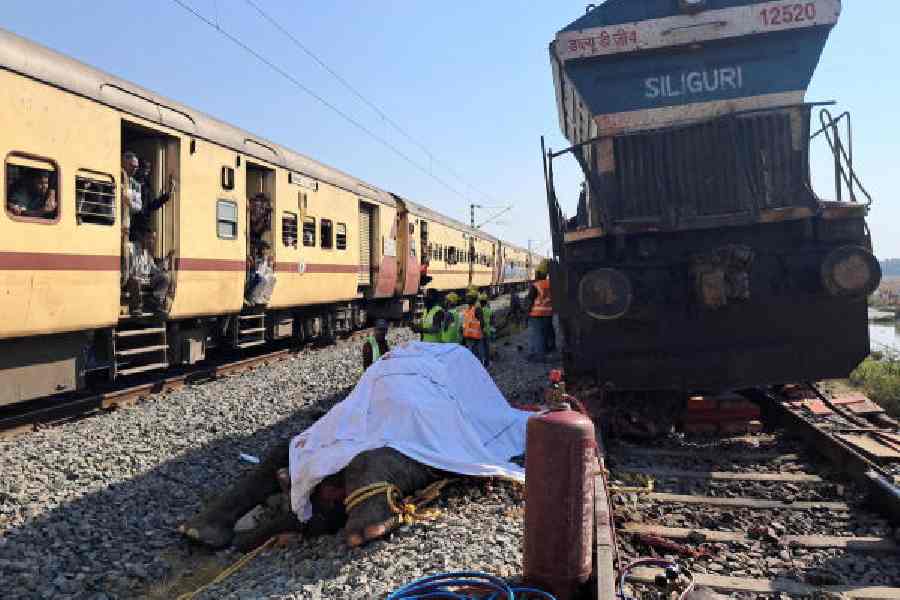 |
| Relatives mourn Hari Uppal’s death at his residence in Patna. Picture by Ranjeet Kumar Dey |
Patna, Jan. 3: With his last breath at 8.40pm on Sunday, the era of classical dance came to a halt.
Shri Hari Uppal, a master in Manipuri and Kathakali dance forms, not only left an empty space in Uppal House in Patna, but has created a large vacuum in Indian art, a space that may never be filled.
Uppal added gems to the cultural entity of the historical city of Patliputra by laying the foundation stone for the institution of art on December 8, 1950.
He named it Bhartiya Nritya Kala Mandir. He founded this institution with just eight boys and 10 girls.
He started teaching different art forms, including varied classical forms and folk dances in Bihar. Soon he started training five classical art forms and five different Bihar folk dance forms. The institution kept on growing from strength to strength.
Born on September 22, 1926, Uppal had his schooling in Patna. Right from his childhood days, he was attracted to diverse forms of art and music. He joined Patna Art College and took up the subject of sculpture. In 1943, he joined Santiniketan on a scholarship. He learnt the Kathakali and Manipuri dance forms, and soon mastered the art.
It was this part of his life, where he first got an international exposure. Later, he spent two years in polishing his skills, learning the dance forms from legendary Guru Kunju Kuru and took formal training at Kerela Kala Mandalam under Ashan Ramakutty Nair.
In 1949, he learnt the dance style under Guru Ojha Amubi Singh and mastered the traditional Ras Maharas and Basant Ras. In 1970, he was sent on a three-month training by the Indian government to Czechoslovakia and Russia to learn folk dances and choreography.
Earlier in 1952, he was awarded Tamra Patra by the Bihar Nritya Natya Kala Parishad and in 2009 he was awarded the Padmashree.
“He was the first in his family to take to dancing. He had to face a number of challenges in his life since his childhood days. He was an average student throughout. His lawyer always wanted him to take a dignified government job, and hold a respectable post. But Uppalji had a passion for what he was doing. He always loved dancing, even though it was not a dignified thing for many in those days. He did what he wanted and became a legend in the form,” said Chaitali, wife of Uppal’s brother-in-law.
She added: “For those who were witness to the remarkable journey of the master, he will never be a man of the past. Rather they are aggrieved as the loss is irreparable.”
“His loss can never be filled up,” said Pandit Shivji Mishra, professor of katthak at Bhartiya Nritya. “I am so fortunate to have had the opportunity to spend some time with him,” he added.
“He was a very strict person. He never condoned any misconduct on the part of Bhartiya Nritya Kala Mandir’s management. He was always available here as he used to live in the quarter on the campus. He used to get up at 5am everyday. He was never rude to anyone,” said an emotional Bhagwan Behra, Odissi lecturer at Bhartiya Nritya Kala Mandir.
His body was taken to the Nritya Kala Mandir today, where students and personalities from the world of art and culture paid their final tributes.










